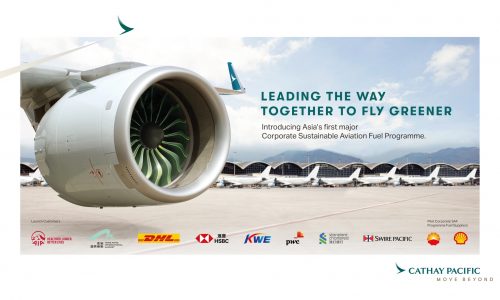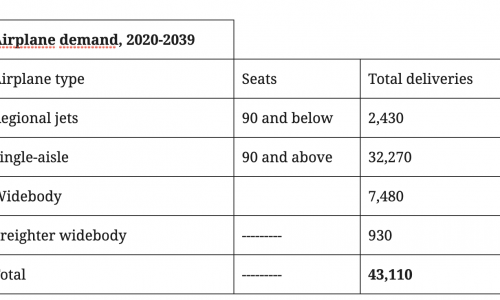ANA Holdings has announced plans to reduce carbon emissions levels from aircraft operations to net zero by 2050 as part of its latest Environmental, Social and Governance (ESG) goals.
It is updating its target set in July 2020 to reduce CO2 emissions by 50 percentby 2050 (compared to 2005 levels).
The key factors driving the decrease in ANA HD’s emissions for aircraft operations will be:
- 1) increased usage of Sustainable Aviation Fuel (SAF)2;
- 2) the development of cutting-edge aircraft and engines with higher fuel-efficiency;
- 3) improved efficiency of aircraft operations and maintenance procedures; and
- 4) the utilization of carbon credit trading3 to help offset environmental impact.
“Sustainability and innovation are both central components of our vision at ANA HD, and we are excited about the opportunity to make meaningful change as we work to advance our ambitious ESG agenda,” said Shinya Katanozaka, President and Chief Executive of ANA Holdings.
“Achieving net zero emissions will require us to pursue a number of initiatives to reduce our carbon footprint across the organization, but our entire team is committed to doing all we can to make ANA HD an example of sustainability in our practices.”
ANA HD’s Environmental Commitments
| Segment | Target for 2030 | Target for 2050 |
| CO2 emissions from aircraft operations | Less than or equal to FY2019 | Net zero (new target) |
| CO2 emissions from non-aircraft operations | Reduce by at least one-third vs. FY2019 | Net zero |
| Resource waste | Reduce by at least 70% | Zero |
| Food waste | Reduce disposal rate to 3.8% (vs. 2019 rate of 4.6%) | Reduce disposal rate to 2.3% (50% cut vs. FY2019) |
The increased use of SAF, which contributes greatly to reducing carbon impact, will be at the core of ANA HD’s CO2 emission reduction measures. To date, we have engaged in various initiatives:
- In 2019, ANA signed an offtake agreement with LanzaTech, Inc. to purchase sustainable aviation fuel, and expanded that partnership in 2020, giving ANA the opportunity to participate in fuel offtake across LanzaJet’s global portfolio and production.
- In 2020, ANA and Neste, one of the world’s biggest suppliers of SAF, entered into a SAF supply agreement, and together conducted the first flight out of Japan using SAF.
- Together with Toshiba Energy Systems & Solutions Corporation ,Toshiba Corporation, Toyo Engineering Corporation, Idemitsu Kosan Co.,Ltd., and Japan CCS Co., Ltd, ANA entered an agreement in 2020 to begin reviewing recycling business models for reuse of CO2 from sources such as exhaust gases into SAF.
- ANA has supported activities within Japan led by companies such as Euglena Co.,Ltd. with its initiative to produce SAF since 2011.
ANA HD will work toward the full-scale operation of SAF, and build upon the successful sustainability measures that it implemented when it initially committed to meeting 2050 ESG goals and aim to achieve net zero CO2 emissions in FY2050 through these efforts.
ANA HD has long been recognized as a sustainability leader for its strong ESG efforts and was the only company in the aviation industry to receive the Gold Class distinction from the 2021 S&P Global Sustainability Awards. Other ESG-related awards for ANA HD have been presented by IATA, J-Win and the Dow Jones Sustainability Index.
- 1: “Net zero” means that the amount of CO2 emitted by ANA will be functionally zero through the usage of advanced technologies, carbon trading and other efforts to reduce emissions.
- 2: Sustainable Aviation Fuel is jet fuel produced from sustainable sources with low CO2 emissions throughout the entire process – from production and collection of raw materials to combustion.
- 3: A system to reduce global emission levels by trading CO2 emission allowances among the aviation industry.

